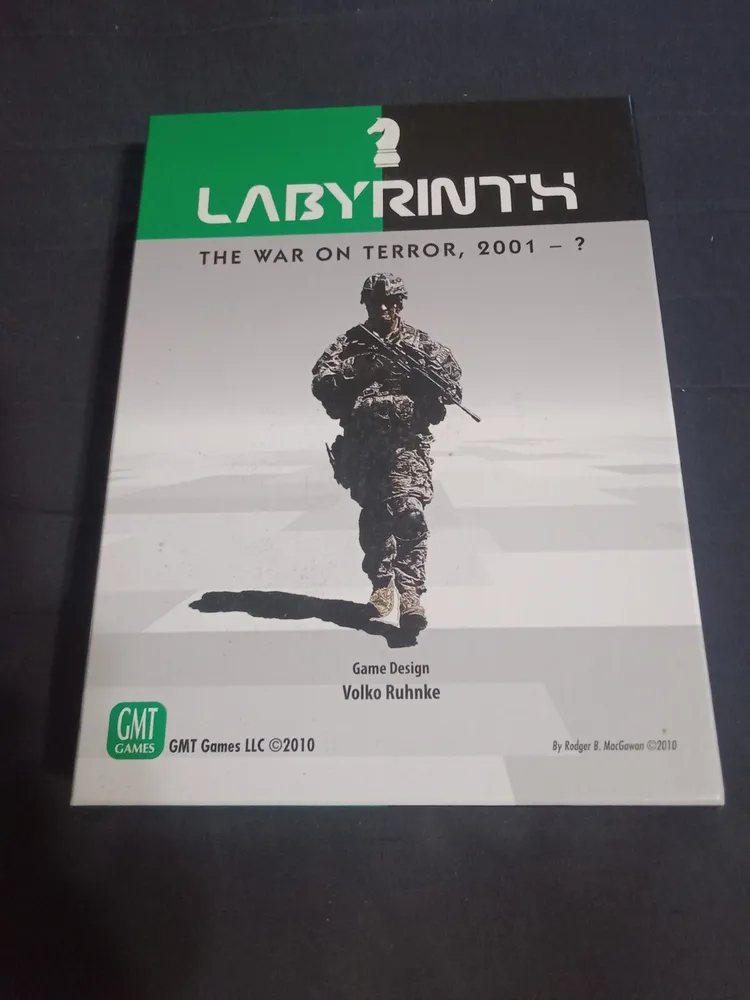Labyrinth: The War on Terror, 2001 – ? (2010)
Labyrinth: The War on Terror, 2001 – ?
“Labyrinth: The War on Terror, 2001–?” is a board game published by GMT Games in 2010, designed to depict the post-2001 struggle between the United States and various radical Islamist jihadist groups. The game is set in the real-world context of the War on Terror and aims to provide a multifaceted simulation spanning recent history.
Why is Labyrinth: The War on Terror, 2001 – ? Popular?
The game is popular and significant because it:
– Offers a unique and immersive experience in the world of wargaming, with a focus on recent history and geopolitical events.
– Provides a complex and challenging simulation of the War on Terror, allowing players to explore the intricacies of global politics and military strategy.
– Features a card-driven gameplay mechanism, which adds depth and replayability to the game.
Game Components of Labyrinth: The War on Terror, 2001 – ?
How To Setup Labyrinth: The War on Terror, 2001 – ?
Setup involves placing the game board, shuffling and dealing the card deck, and positioning the counters according to the initial game state. The process typically takes 5-15 minutes. The game includes detailed rules and a playbook to guide the setup and initial play.
Gameplay Mechanics and Game Objective
Player Experience
Playing **Labyrinth** feels like navigating a complex web of political, military, and ideological conflicts. The US player must balance military force with diplomatic efforts, while the Jihadist player must remain elusive and exploit opportunities for terrorist actions. The game rewards strategic thinking and adaptability, as the card deck and dice rolls introduce a significant amount of randomness and unpredictability. The solo mode allows a single player to take on the ascending challenges of the game, but the multiplayer experience is where the game truly shines, capturing the asymmetrical nature of the conflict.
Pros
Cons
Personal Thoughts on Labyrinth: The War on Terror, 2001 – ?
This game is ideal for players who enjoy deep, strategic gameplay and are interested in historical and geopolitical themes. It is particularly suited for those who appreciate asymmetric gameplay and are willing to invest time in learning the complex mechanics. However, it may not be the best fit for casual players or those seeking a quick, simple gaming experience. The game’s ability to simulate the intricate dynamics of the War on Terror makes it a compelling choice for enthusiasts of wargames and historical simulations.
We are supported by our audience. When you purchase through links on our site, we may earn an affiliate commission, at no extra cost for you. Learn more.

